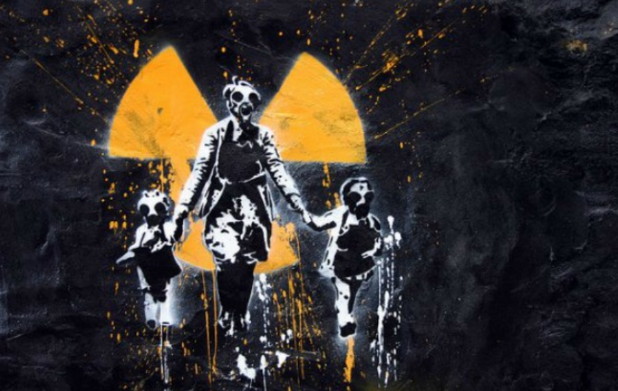According to state and federal records,
The operator of a closed radioactive waste dump that caught fire in southern Nevada had trouble over the years with leaky shipments and oversight so lax that employees took contaminated tools and building materials home...A report from the state fire inspector, Martin Azevedo, described the scene of the explosion of 1970s waste materials as containing "moisture in the pit and 'heavily corroded' 55-gallon drums in and around the 20-foot-by-30-foot crater. Debris from the blast spread 190 feet. Two drums were found outside the fence line." Officials say they don't know about all the materials that would have been in the inexplicable Oct 18 explosion.
The firm, now called US Ecology Inc., had its license suspended for mishandling shipments in the 1970s — about the same time that state officials say the material that exploded and burned last weekend was accepted and buried.
US Ecology - formerly Nuclear Engineering Co. - turned over 40 seconds of soundless footage showing white smoke bursts and dirt blasts about 110 miles northwest of Las Vegas. They have 15 various hazardous waste sites across the country including one accepting toxic polychlorinated biphenyls (PCBs) right next to the radiation site.
Records show that before the 40-acre dump site was closed in 1992 near Beatty, Nevada, that 4.7 million cubic feet of materials had been buried there. Officials reported "22 trenches up to 100 feet deep and 800 feet long, with pits capped by up to 10 feet of clay and dirt."
The state of Nevada has now taken ownership of the property and the situation - in the past the site had been the first federally licensed low-level radioactive waste dump. The permit allowed for low-level radioactive waste, contaminated tools, protective clothing, machine parts, medical items and laboratory supplies.
The site had a history of dangerous situations including leaking trucks, contaminated smoke emissions, leaking containers, improper venting and being shut down once when a radioactive cargo truck caught fire outside the site in 1979. Employees had been known to pilfer contaminated tools and supplies.
Comment: EPA data shows radiation spiked in Las Vegas soon after explosions at nearby nuclear waste facility
This news highlights issues of lax attitudes towards exposing citizens to deadly radioactive waste. Recently, St. Louis, Missouri, residents were frightened to find out that landfill fires could reach nuclear waste sites and create fallout. They were just reeling from finding out that their inordinate amount of cancer clusters could be from the government secretly dumping byproducts of the Manhattan Project in their towns. Interest in radiation issues has finally reached great heights after Fukushima.
The practice of "fracking" is also creating another troublesome source of radioactive waste as it dredges up radioactive sources that were buried safely inside the earth. Frack waste-water, you may recall, is sold back to drought-stricken farmers as a source of water for our food supply. This is worrisome and frustrating given that while people are still livid and focused on the ongoing Fukushima disaster - the U.S. is busy creating and exposing its people to yet more sources of dangerous and cancer-causing radioactive waste.
Comment: Worrisome and frustrating facts about Fukushima:
Learn more about radiation and protecting your family with this handy Radiation Field Guide.




Comment: And while the U.S. is busy exposing people to more sources of dangerous and cancer-causing radioactive waste the US Nuclear Regulatory Commission is claiming radiation good for you!